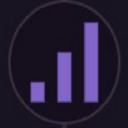-
 bitcoin
bitcoin $111145.080499 USD
0.75% -
 ethereum
ethereum $3928.989005 USD
1.66% -
 tether
tether $1.000226 USD
-0.02% -
 bnb
bnb $1108.209329 USD
-2.26% -
 xrp
xrp $2.545944 USD
6.36% -
 solana
solana $193.960655 USD
0.72% -
 usd-coin
usd-coin $1.000128 USD
0.02% -
 dogecoin
dogecoin $0.199304 USD
2.23% -
 tron
tron $0.297908 USD
-4.88% -
 cardano
cardano $0.656962 USD
2.13% -
 hyperliquid
hyperliquid $39.225782 USD
-1.92% -
 chainlink
chainlink $17.897108 USD
2.99% -
 ethena-usde
ethena-usde $0.999354 USD
-0.02% -
 stellar
stellar $0.321154 USD
3.36% -
 bitcoin-cash
bitcoin-cash $505.299839 USD
5.10%
What are Bybit trading fees? A full Bybit fee structure breakdown.
Bybit offers competitive, transparent fees with maker rebates, VIP tiers, and multiple ways to reduce costs through volume, staking, and referrals.
Oct 20, 2025 at 05:01 pm
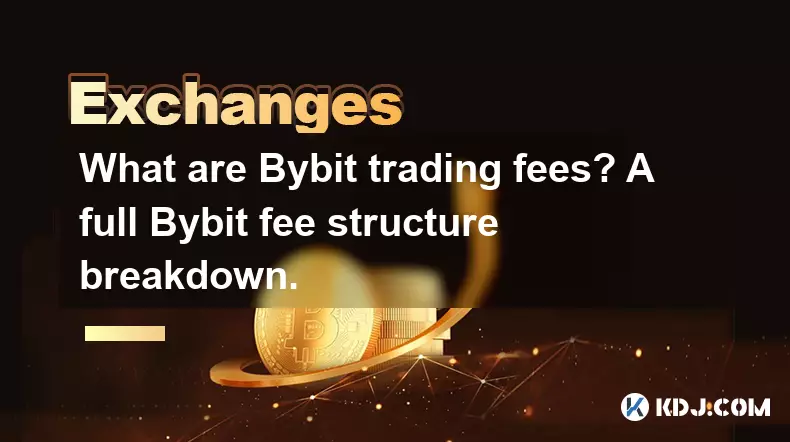
Bybit Trading Fees Overview
1. Bybit operates with a tiered fee structure that varies based on the type of trade—spot, futures, or perpetual contracts—and whether the user is a maker or taker. The platform does not charge deposit fees for cryptocurrencies, making it cost-effective for users to fund their accounts. Withdrawal fees are asset-specific and reflect network transaction costs, ensuring transparency.
2. For spot trading, Bybit applies a flat fee model. Both makers and takers are charged 0.1% per trade. This simplifies cost calculation for new traders who may find complex fee tiers difficult to navigate. While this rate is slightly higher than some competitors offering sub-0.05% fees, the consistency reduces confusion during high-frequency trading.
3. In derivatives trading, including USDT-margined and inverse perpetual contracts, Bybit differentiates between maker and taker fees. Makers add liquidity and are rewarded with lower fees, typically set at -0.025%, which means they receive a rebate for each qualifying order filled. Takers, who remove liquidity by executing against existing orders, pay a fee of 0.075%.
4. The negative maker fee is a strategic incentive designed to attract professional traders and market makers who enhance order book depth. This contributes to tighter spreads and improved execution quality across popular pairs like BTC/USDT and ETH/USDT. High-volume traders benefit significantly from this structure, especially when scalping or running algorithmic strategies.
5. VIP programs are available for users who meet specific 30-day trading volume thresholds. These tiers reduce taker fees and increase maker rebates progressively. For instance, VIP 1 starts at $5 million in volume and reduces taker fees to 0.06% while increasing maker rebates to -0.03%. Higher tiers offer even greater reductions, with the top-tier VIP 6 achieving a taker fee of 0.01% and a maker rebate of -0.045%.
Leverage and Funding Costs in Derivatives
1. Leverage itself does not incur additional fees on Bybit; however, holding leveraged positions in perpetual contracts involves periodic funding payments. These payments occur every eight hours and are exchanged directly between long and short position holders, not collected by Bybit. The rate is determined by market demand and typically ranges between 0.01% and 0.03% per interval.
2. When the funding rate is positive, longs pay shorts. When negative, shorts pay longs. This mechanism aligns the contract price with the underlying spot value and prevents prolonged divergence. Traders must monitor these rates closely, as sustained high funding can erode profits over time, particularly in trending markets.
3. Bybit calculates funding based on the average premium index over the previous hour. This approach smooths volatility and avoids manipulation. The formula includes both interest and premium components, though the interest portion is usually negligible (set at 0.01% annualized).
4. Users can view upcoming funding times and estimated rates directly on the trading interface. This transparency allows for strategic entry and exit decisions, such as closing positions before a large payment is due. Some traders actively arbitrage funding differentials across exchanges, using Bybit’s competitive rates as part of a broader portfolio strategy.
5. It is important to note that isolated margin modes do not alter funding fees—they remain identical to cross-margin positions. However, risk exposure is capped in isolated mode, which indirectly affects how much a trader might lose if adverse funding accumulates alongside unfavorable price movement.
Fee Discounts and Loyalty Programs
1. Bybit offers multiple pathways to reduce trading fees beyond the standard VIP program. One method is through the use of the Bybit Token (BYB), which can be staked to unlock additional discounts. Holding and staking BYB increases a user’s VIP tier eligibility, effectively lowering fees without requiring higher trading volume alone.
2. Referral programs also contribute to cost reduction. Inviting new users grants both parties a percentage discount on taker fees for a limited period. Successful referrals accumulate benefits, especially for community leaders or content creators who bring in consistent trading volume.
3. Bybit occasionally runs promotional campaigns where fee rebates are distributed in USDT or other tokens. These events target specific trading pairs or product usage, such as first-time options traders receiving partial refunds on opening fees. Such promotions provide temporary but meaningful relief from standard cost structures.
4. Institutional clients have access to custom fee agreements based on committed monthly volumes. These negotiated rates often surpass standard VIP levels and include added services like API support and dedicated account management. Minimum volume requirements start at $50 million per month.
5. Subaccounts under a single master account consolidate trading volume for VIP tier assessment. This feature benefits funds or teams managing multiple strategies, allowing them to pool activity and achieve higher tiers collectively, thus reducing overall fee burden across all linked accounts.
Frequently Asked Questions
What is the difference between maker and taker fees on Bybit?Maker fees apply to limit orders that rest on the order book and add liquidity. On Bybit, makers often receive rebates (negative fees). Taker fees apply to market or aggressive limit orders that execute immediately against existing orders, removing liquidity, and are charged at a higher rate.
Does Bybit charge withdrawal fees?Yes, Bybit charges withdrawal fees that vary by cryptocurrency and reflect current network congestion and transaction costs. These fees are displayed clearly before confirmation, ensuring users know the exact amount deducted.
How can I lower my trading fees on Bybit?Traders can reduce fees by increasing their 30-day trading volume to qualify for higher VIP tiers, staking BYB tokens, participating in referral programs, or joining promotional rebate events offered periodically by the platform.
Are there any hidden fees when trading on Bybit?Bybit maintains a transparent fee model with no hidden charges. All applicable fees—trading, funding, withdrawal—are disclosed upfront. Funding fees are peer-to-peer and not retained by the exchange, further enhancing transparency.
Disclaimer:info@kdj.com
The information provided is not trading advice. kdj.com does not assume any responsibility for any investments made based on the information provided in this article. Cryptocurrencies are highly volatile and it is highly recommended that you invest with caution after thorough research!
If you believe that the content used on this website infringes your copyright, please contact us immediately (info@kdj.com) and we will delete it promptly.
- Essex Post Office, 5p Coins, and King Charles: A Royal Mint Revelation!
- 2025-10-23 10:30:16
- Waymo's Newark Airport AV Tests: Alphabet's AI Gamble Pays Off?
- 2025-10-23 10:30:16
- King Charles 5p Coins: A Royal Flush in Your Pocket?
- 2025-10-23 10:35:18
- Solana, Crypto Advisory, and Forward Industries: A New York Minute on the Future of Finance
- 2025-10-23 08:51:22
- MAGACOIN: Ethereum Whales Dive into the Hottest Presale of 2025
- 2025-10-23 08:51:22
- Kadena's End of the Road? KDA Token Plummets Amid Project Abandonment
- 2025-10-23 08:55:34
Related knowledge
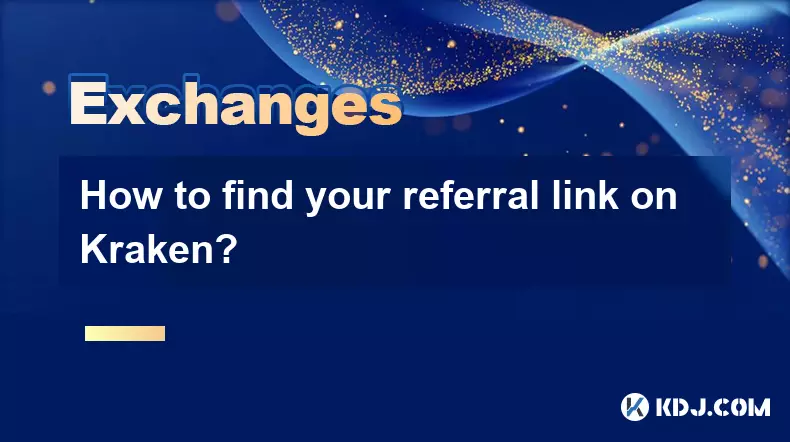
How to find your referral link on Kraken?
Oct 25,2025 at 12:09pm
Accessing Your Kraken Account Dashboard1. Navigate to the official Kraken website and log in using your registered email and password. Two-factor auth...
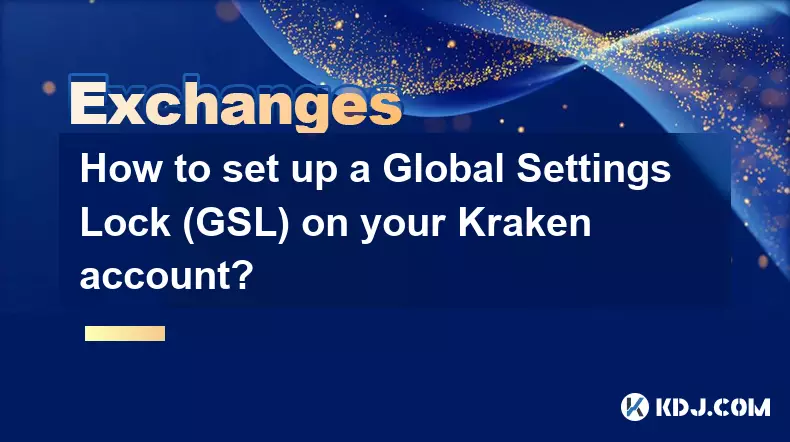
How to set up a Global Settings Lock (GSL) on your Kraken account?
Oct 25,2025 at 08:31am
Understanding Global Settings Lock (GSL) on Kraken1. The Global Settings Lock (GSL) is a security feature offered by Kraken to protect user accounts f...

How to deposit using ACH on Kraken?
Oct 25,2025 at 08:02am
Understanding ACH Deposits on Kraken1. ACH, or Automated Clearing House, is a widely used electronic network for processing financial transactions in ...

How to buy Ethereum on Kraken?
Oct 25,2025 at 07:11am
Creating a Kraken Account1. Navigate to the official Kraken website and click on the 'Sign up' button located at the top right corner of the homepage....
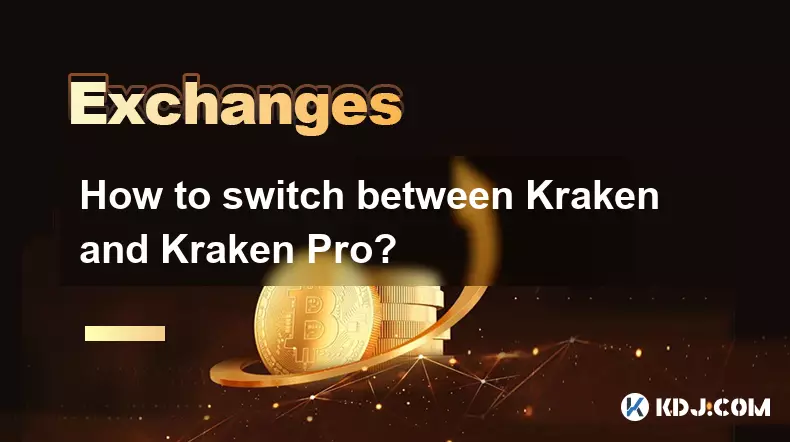
How to switch between Kraken and Kraken Pro?
Oct 25,2025 at 08:57am
Understanding Kraken and Kraken Pro1. Kraken is a well-established cryptocurrency exchange platform that offers users the ability to buy, sell, and tr...
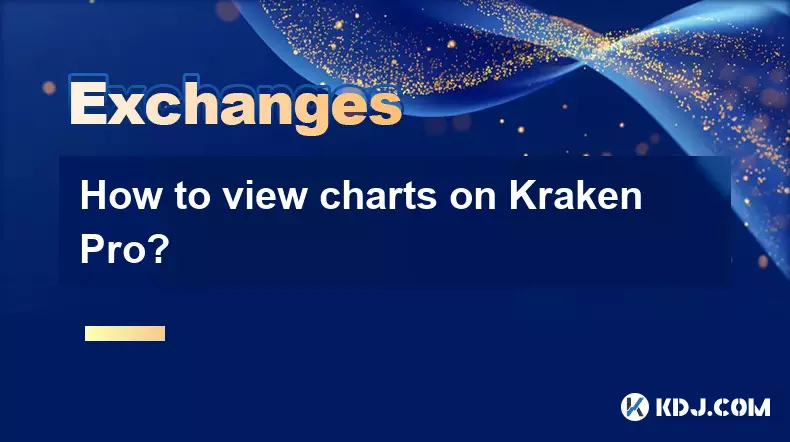
How to view charts on Kraken Pro?
Oct 24,2025 at 10:37pm
Accessing the Kraken Pro Trading Interface1. Log in to your Kraken account and navigate to the Kraken Pro platform by selecting it from the trading in...

How to find your referral link on Kraken?
Oct 25,2025 at 12:09pm
Accessing Your Kraken Account Dashboard1. Navigate to the official Kraken website and log in using your registered email and password. Two-factor auth...

How to set up a Global Settings Lock (GSL) on your Kraken account?
Oct 25,2025 at 08:31am
Understanding Global Settings Lock (GSL) on Kraken1. The Global Settings Lock (GSL) is a security feature offered by Kraken to protect user accounts f...

How to deposit using ACH on Kraken?
Oct 25,2025 at 08:02am
Understanding ACH Deposits on Kraken1. ACH, or Automated Clearing House, is a widely used electronic network for processing financial transactions in ...

How to buy Ethereum on Kraken?
Oct 25,2025 at 07:11am
Creating a Kraken Account1. Navigate to the official Kraken website and click on the 'Sign up' button located at the top right corner of the homepage....

How to switch between Kraken and Kraken Pro?
Oct 25,2025 at 08:57am
Understanding Kraken and Kraken Pro1. Kraken is a well-established cryptocurrency exchange platform that offers users the ability to buy, sell, and tr...

How to view charts on Kraken Pro?
Oct 24,2025 at 10:37pm
Accessing the Kraken Pro Trading Interface1. Log in to your Kraken account and navigate to the Kraken Pro platform by selecting it from the trading in...
See all articles






































































